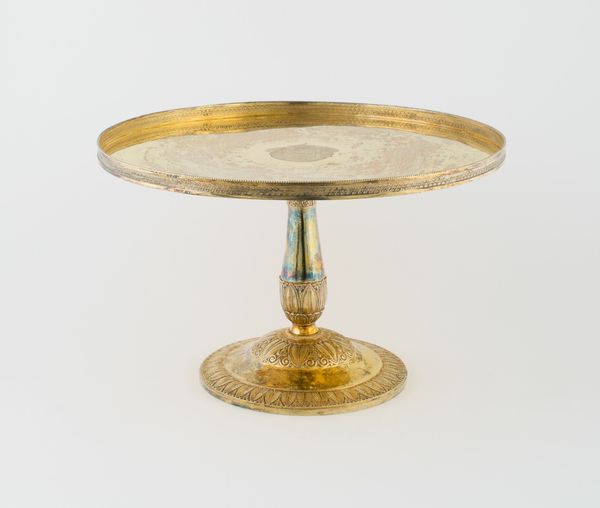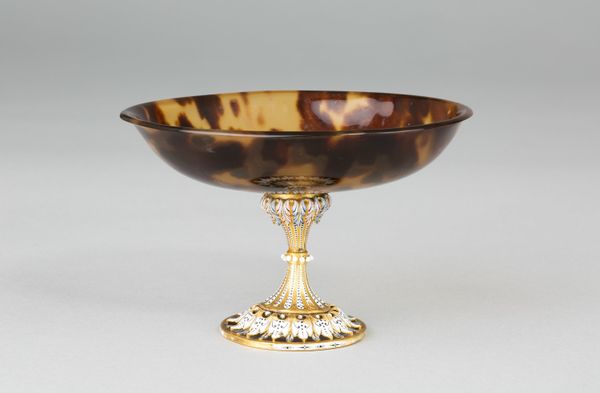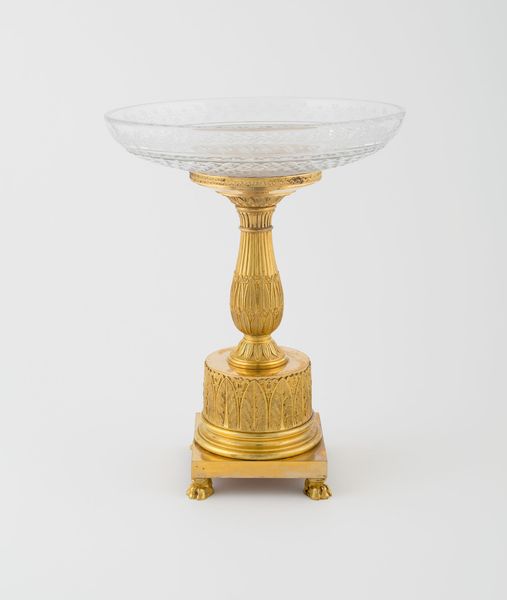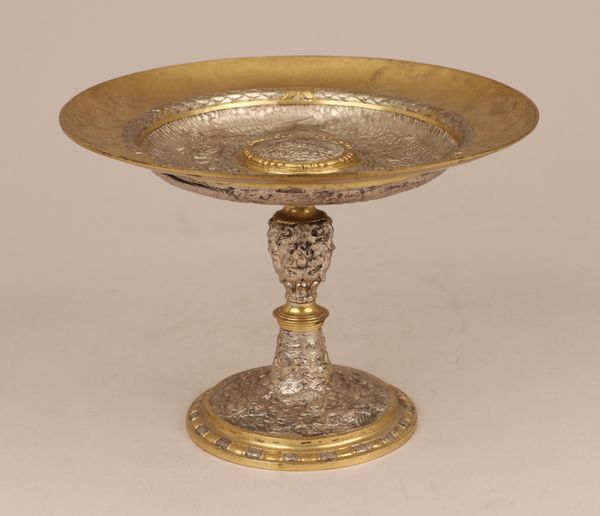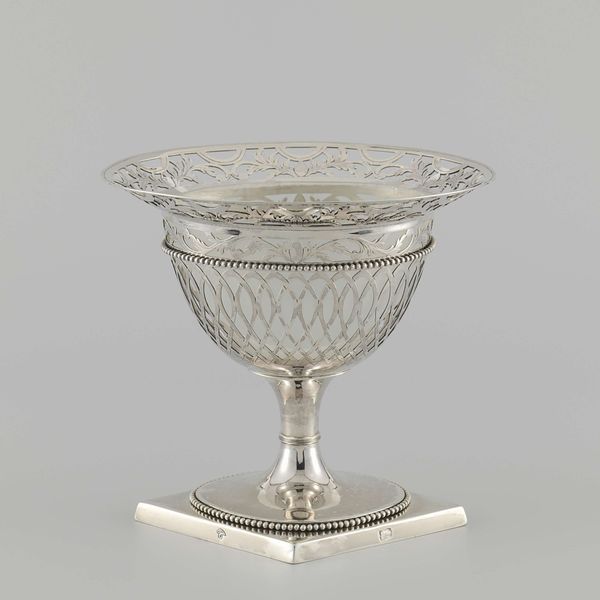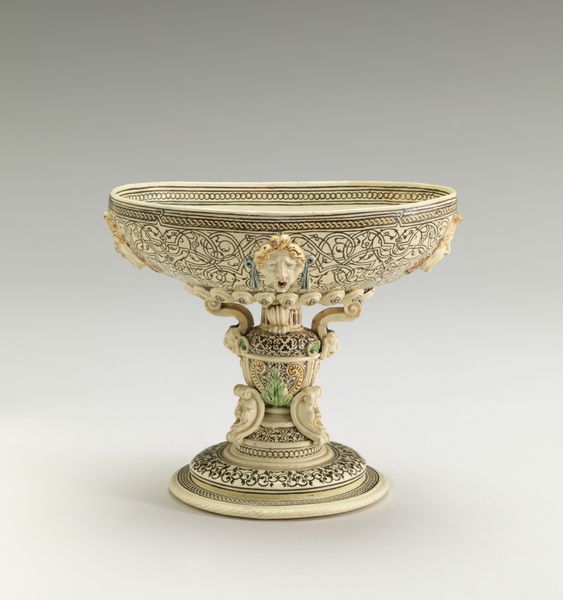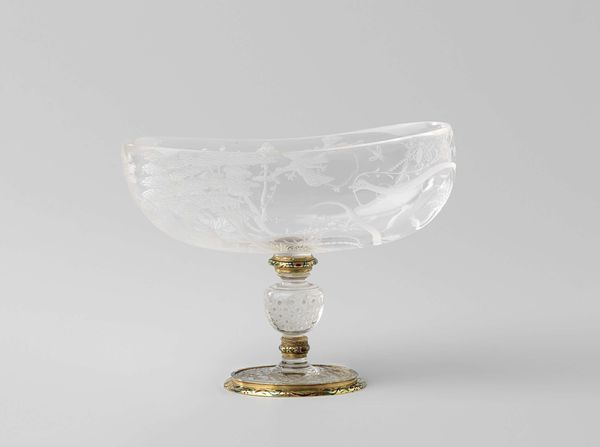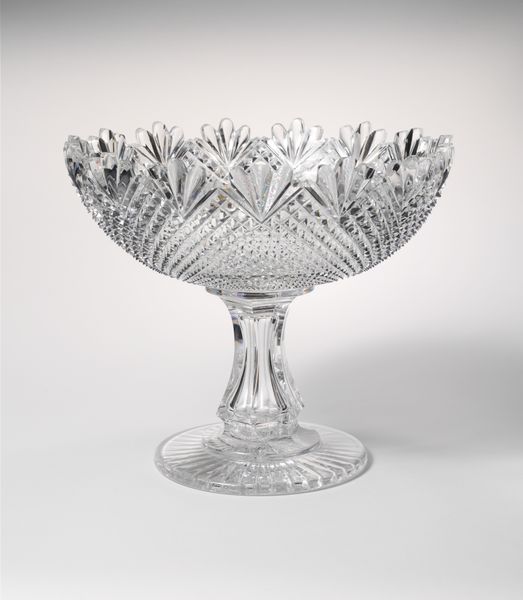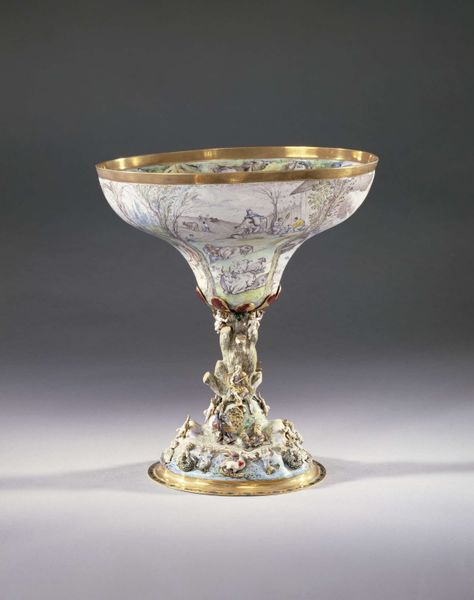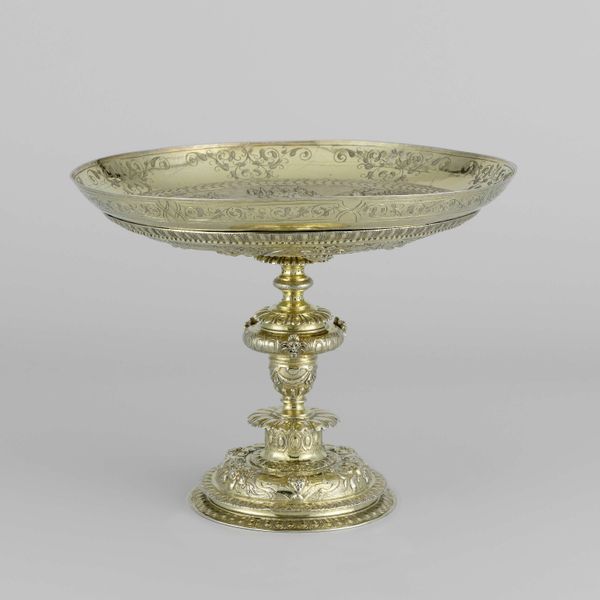
glass
#
glass
#
ceramic
#
decorative-art
Dimensions: 15.9 × 26.8 × 22.5 cm (6 1/4 × 10 9/16 × 8 7/8 in.)
Copyright: Public Domain
Curator: Today, we're observing "Compote," a piece attributed to the Boston and Sandwich Glass Company, dating roughly from 1830 to 1845. It is currently held at the Art Institute of Chicago. Editor: Well, it's immediately striking. That bright, almost honey-like color—it speaks of prosperity and display. Makes you wonder about the gatherings where something like this would have been centered. Curator: Indeed. Let's consider its form. The elevated dish, the symmetrical design with what appears to be repeated floral patterns around the bowl, all resting on a stem ending in a meticulously crafted multi-lobed base. There's a real concern for geometric precision and layered details. Editor: Yes, but precision for whom? These decorative arts are often relegated as "lesser" compared to painting or sculpture, and are typically made by laborers who don’t get any of the “prestige.” It is also quite likely that the “prosperity” it represents would only be for those upper echelons of society who consumed objects like this, while the makers went without. What were the working conditions of the artisans? Curator: That is a crucial question, definitely, but allow me to also underscore the visual mastery within the piece itself. Observe the meticulous detailing achieved in the molded glass; it speaks volumes about the maker's understanding of their medium. Note also how light would have played across those surfaces. Editor: Exactly. And light for whom? Such ornamentation reinforced social stratifications, with pieces such as this reinforcing gendered roles in serving and home making. Were women empowered by the art, or further constrained within decorative, domestic spaces? It certainly presents interesting historical avenues. Curator: Of course. And now I find myself looking for, not just the patterns within the glass, but at these larger frameworks that would have also shaped its perception. It's been enriching. Editor: It truly has. "Compote," then, becomes more than just an aesthetic object; it embodies its historical moment—its politics, social expectations, and possibilities.
Comments
No comments
Be the first to comment and join the conversation on the ultimate creative platform.
